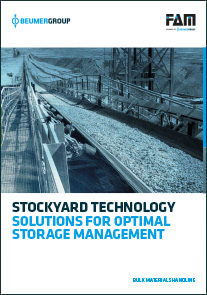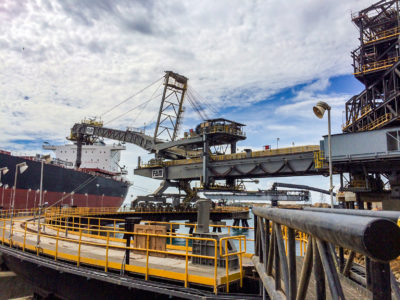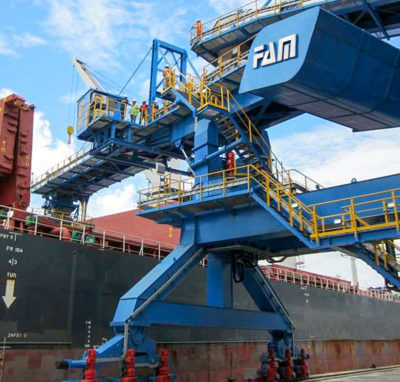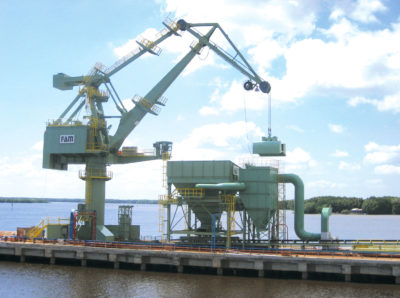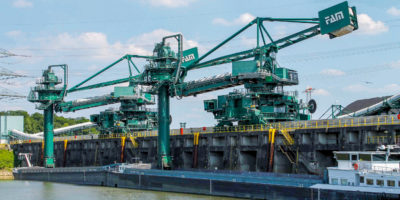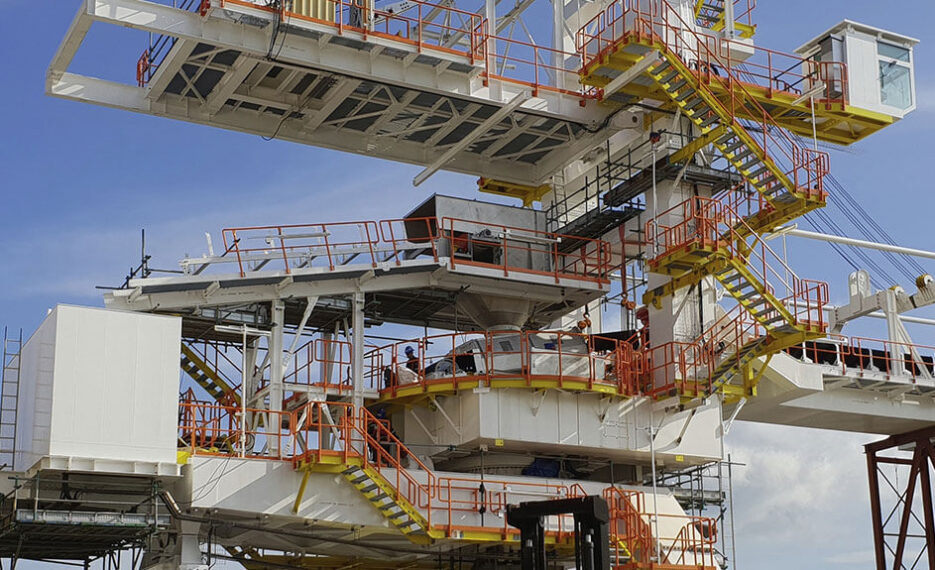Port technology for loading and unloading ships
In numerous supply chains ships are an indispensable form of transport. Every hour that a freighter is delayed in a port for too long increases the production costs. Another important productivity factor is the speedy loading of ships. It is best when the manufacturer of the port technology is able to adapt his system to the available local space and the variable sizes of the vessels, at the same time taking into account the properties of the goods to be transported. From the entire conveyor technology to the actual loading of the ships, we ensure the smooth handling of the bulk materials.

Our Port Technology at a glance
Lastly, the nature of the terminal is decisive for the port technology used. As a result of the qualified design and also in coordination with the port operator – a system is created that makes economic port handling possible. Let us now go into the individual ship loaders. The stationary ship loader is used most frequently. This crane technology achieves a large radius when loading with its hydraulically telescopic boom. Rail-bound ship loaders offer an advantage here. They move in a line along the entire ship. The power supply for the main drive is provided by cable drums (winch technology). With an output of up to 3,000 tons per hour, they load inland and ocean-going vessels. Jibs are designed to be lift able and rotatable or lift able and lower able by crane winches for even distribution in the cargo hold. As the third series, the quadrant ship loader completes our portfolio. The bridge-shaped system is mounted on circular rails. The combination of bridge rotation and an extendable boom length enables the operator to access all areas of the ship’s hold. In order to save space in the port, all ship loaders can also be flexibly supplied with the material from bucket elevators.
-
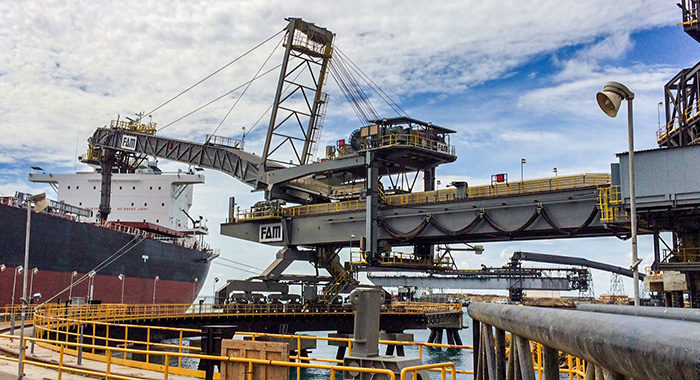 We offer a variety different systems for ship loading. These systems must fit in the port infrastructure ...
We offer a variety different systems for ship loading. These systems must fit in the port infrastructure ... -
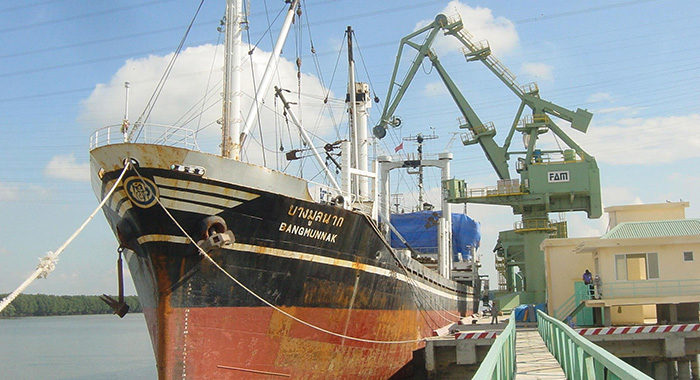
Ship Unloaders
For bulk materials unloading, two types of handling systems are basically deployed: continuous and discontinuous. -

Continuous Ship Unloaders
The continuous mode of operation helps reduce the environmental footprint. It allows for dust-free and low-noise operation ...
LOADING TECHNOLOGY FOR INLAND AND CARGO SHIPS
The size of the ships that are to be loaded is also an important specification when developing the correct system. Barges are relatively short vessels. So stationary ship loaders do a marvelous job here. But the ocean bulk carriers such as the “Valemax” also have to be loaded. With a length of 362 meters, which is almost the same height as the Berlin television tower, the technology at the harbours loading point requires an expedient construction. Mobile ship loaders move along the entire length of the ship and fill larger holds without any problems. Read about all the types of ship loaders we offer in the next section.
Port technology for coarse and powdered bulk goods
The properties of the bulk materials to be loaded will determine the port technology used in the construction. Coarse bulk materials such as lumpy ores or clinker for cement production are loaded into the holds of a freighter with the help of conveyor belts and a vertical telescopic pipe. With powdery bulk materials, the conveying systems are encapsulated, i.e. completely enclosed. Filter systems optimise the procedure so that an exchange of the raw material with the environment is prevented efficiently. A spiral conveyor or pneumatic conveyor can also be used as a flexible solution for the delivery of very fine-grained products.
References
port technology for ship loading in action
The BEUMER Group installed a port technology in Malaysia for the loading of carbamide, also known as urea, on to ships. In one of the largest urea production facilities, belt conveyor belts pick up the bulk goods in the long-term storage and load ships with up to 1,000 tons of the product per hour. The ship loader moves on rails for fast loading. It is also designed with a swiveling telescopic chute and a centrifugal belt conveyor. Read more about our solution here.

